“What happened?” asked her mom.
“Abana bagaba kusomelo nti nina silimu ate ntinda bika bubbi nyo era ngenda kuffa esawa yona era negamba nze silina kuba kusomero nina kubawaka effe bulungi,” said Rukiya.
“The children say I have [...]]]>
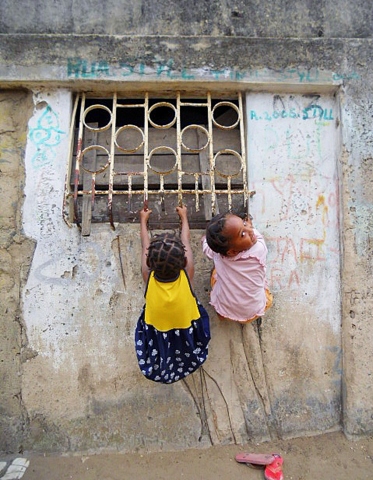
Climbing the wall of prejudice: HIV positive children need loads of love and support to deal with their own status and with prejudice. Credit: Mercedes Sayagues
One day Rukiya came home from school crying, sobbing that she didn’t want to go there again.
“What happened?” asked her mom.
“Abana bagaba kusomelo nti nina silimu ate ntinda bika bubbi nyo era ngenda kuffa esawa yona era negamba nze silina kuba kusomero nina kubawaka effe bulungi,” said Rukiya.
“The children say I have AIDS, I look very bad and I will be dying soon and I don’t need to be at school, I should stay at home and die.”
Rukiya is five years old and was born with HIV. Her mom didn’t know they were both HIV positive until Rukiya got very sick at age two. Both mother, father and daughter have been on antiretroviral therapy ever since. They live in Kampala, Uganda.
I’m like Rukiya’s second mom, so her alarmed mother called me. I was busy at work but realized that Rukiya needed me more than my office and went to their home.
Rukiya told me what happened and she asked me to tell her the truth, just me and her.
I didn’t know what to do. First I sat with the mother, just me and her. I asked if it was Ok for Rukiya to know the truth. The mother felt the child had the right to know, like any person living with HIV. We both thought she suspected or already knew what her daily pills were for.
So I told Rukiya she is HIV-positive like me and her mom. I explained that I have lived with HIV for ten years, double her age, and I am going to live for many more because I love myself the way I am.
“Mommy Jackie,” she said. “Wana ngeda kuffa mangu nyo oba nage neganda kubera nga gwe niyye eyonyi?”
“Is it true that I am going to die soon or will I live and be like you and travel like you?”
“You will live only if you love yourself, take good care of yourself and take your medicines without missing a day,” I replied.
“Is HIV the reason why I am taking these pills?” she asked.
“Yes,” we said.
Strong girl
I write this on one page but the process took us the whole day. Then it took two weeks of counselling, with loads of support, care and love we showed Rukiya, before she managed to go back to school without fear.
She looked happy and ready to start a new life with her known HIV status.
It gives me joy that she is such a strong girl who can handle a difficult situation.
Uganda has a policy that does not allow disclosing their HIV status to a child who is under 13 years old. For children with little or no support, this may be best. I would not disclose to children who don’t have the kind of strong family support Rukiya has.
But we decided to tell her because we felt she already knew the truth. We did not want her to hurt her further with a lie.
We started taking our medicines the three of us together, so she would feel she is not alone.
Recently I asked her what she wanted to do when she grew up.
“I want to be the first woman pilot in Uganda because when mummy Jackie tells me about her travels, it makes me feel like travelling everyday and every year,” she replied.
I smiled and hugged her. She is OK. We are OK. It was the right decision to tell her she lives with HIV.
Rukiya is now seven, healthy and doing well at school.
In my next blog I will tell you how it happened that I became Rukiya’s second mum.
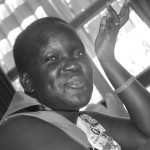 Jacquelyne Alesi is a wife, mother, daughter, HIV activist and Programme Director at the Uganda Network of Young People Living with HIV/AIDS, an organization that since 2003 works to improve the quality of life for HIV-positive youth in Uganda.
Jacquelyne Alesi is a wife, mother, daughter, HIV activist and Programme Director at the Uganda Network of Young People Living with HIV/AIDS, an organization that since 2003 works to improve the quality of life for HIV-positive youth in Uganda.
]]>
For over two years 165,000 children in conflict zones of Blue Nile and South Kordofan in south eastern Sudan have been under fire; with little food and clean water, few schools and some have been forced to dig out small shelters in caves to flee the [...]]]>
For over two years 165,000 children in conflict zones of Blue Nile and South Kordofan in south eastern Sudan have been under fire; with little food and clean water, few schools and some have been forced to dig out small shelters in caves to flee the fighting. Away from cameras, their plight is unseen and underreported.
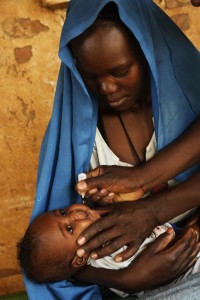
An infant is vaccinated against polio in the town of Kabkabia in North Darfur State. Photo credit: © UNICEF/NYHQ2006-0565/Noorani
These children have had almost no healthcare and little or no protection. The conflict is robbing them of their childhood. And now they are in grave danger from a disease that has the power to disable them as much as any weapon: Polio.
As polio spreads across the war zones of Syria and Somalia, and stalks the Horn of Africa, our great opportunity to rid the world of another debilitating disease since small pox is being thwarted.
Last week seven million children across Sudan were reached as part of a national polio vaccination campaign. However, the 165,000 children living in the conflict zones of South Kordofan and Blue Nile missed out.
We wait for final agreement from the conflicting parties, the Government of Sudan and the Sudan People’s Liberation Movement North (SPLMN), to allow the safe passage of our staff and vaccines to reach these children. We have heard and seen good intentions, support and commitments over the past few weeks. We welcome every ongoing effort to get the job done.
Vaccinating these children against polio would just be the beginning. Once the door is open for polio vaccines, easy to administer than other vaccines, the aim is to forge a path of peace for much more: clean water, medicines, and the chance to go to school. We can only do this together with both parties to the conflict.
We will not give up hope. We cannot let conflict stop us. We are ready with the vaccines, the equipment, the people and the resolve to reach each one of those children.
We have 165,000 reasons and no excuses.
Twitter handle: @gcappelaere
Please use hashtags: #endpolio #Sudan #165000reasons
Web address: www.unicef.org/
]]>Two weeks ago I met Jeanne and Hubert Mwangaza in a poor suburb of Lubumbashi, Democratic Republic of Congo (DRC), where I was on a video assignment with UNICEF. Hubert could not wait to tell me – on camera – [...]]]>
Two weeks ago I met Jeanne and Hubert Mwangaza in a poor suburb of Lubumbashi, Democratic Republic of Congo (DRC), where I was on a video assignment with UNICEF. Hubert could not wait to tell me – on camera – how proud he is that all his children are HIV negative. Him and his wife are both HIV positive.
When they met, Jeanne had given up any hope to have children. Hubert convinced her that prevention of mother-to-child transmission could give them HIV-negative babies.
He accompanied Jeanne to ante-natal visits and checked that she took her antiretroviral medication regularly. He was with her during each birth of their three daughters and when they were tested for HIV.
For her last-born, Marie, Jeanne was put on the new revolutionary one-pill-a-day antiretroviral treatment known as life-long treatment.
Women on this new regimen are able to breastfeed their babies safely for six months, provided that they adhere to the treatment. Marie has to take another HIV test at six and 18 months, but Hubert is confident that his little girl, like her elder sisters, is born without the virus.
Only a few years ago, this family’s story would have been the exception rather than the rule. Today, Botswana, Ghana, Namibia and Zambia have virtually eliminated new HIV infections in children, and a few more countries in Africa are close behind them.
However, children’s access to antiretrovirals remains unacceptably low – only three in 10 eligible children receive HIV treatment in many of the most affected countries.
Dramatically improving these numbers is among the top goals for the 22 priority countries targeted by the Global Plan that aims to elimination new HIV infections among children by 2015 and keeping their mothers alive.
Securing child health is only a fraction of the job to be done. Too many women are getting infected and not all pregnant women living with HIV are accessing life-saving treatment.
Between 2009 and 2012, there has been no decrease in the number of new HIV infections among women. We need to redouble efforts in preventing HIV among adults- and especially young women- through a combination of safer sexual behaviour, voluntary medical male circumcision and use of antiretroviral therapy among discordant couples.
Voluntary family planning services for all women, including women living with HIV, can prevent unwanted pregnancies and help reduce new HIV infections among children. Young women in particular should have access to voluntary planning and comprehensive information about preventing HIV.
In the next months, Inter Press Service Africa, in collaboration with UNAIDS, Unicef and UNFPA, will tell many stories like Jeanne and Hubert’s — stories of courage and resilience that will rekindle our hope that a generation of babies born without HIV to healthy mothers living with HIV is around the corner. Other stories will highlight challenges to solve if we are to turn that corner by 2015.
The Countdown to Zero New HIV Infections project explores community, policy and expert efforts across Africa to achieve these goals through in-depth feature stories, portraits and testimonies.
Follow the stories here: http://www.ipsnews.net/news/projects/countdown-to-zero/
Enter the conversation:
Facebook: www.facebook.com/countdowntozeroHIV
Twitter: @ZeroNewHIV
]]>Rohafza spends her days sitting behind a padlocked grill door, immovable and staring at Maidani, the place her son is buried. The woman’s face is pale, and her hair is graying. For two years the door has stayed closed, barring Rohafza from seeing her son’s grave. It’s her family that is [...]]]>
Rohafza spends her days sitting behind a padlocked grill door, immovable and staring at Maidani, the place her son is buried. The woman’s face is pale, and her hair is graying. For two years the door has stayed closed, barring Rohafza from seeing her son’s grave. It’s her family that is keeping her gated – for her own safety, as they say – to prevent Rohafza from sneaking out at night to scream at the grave site.
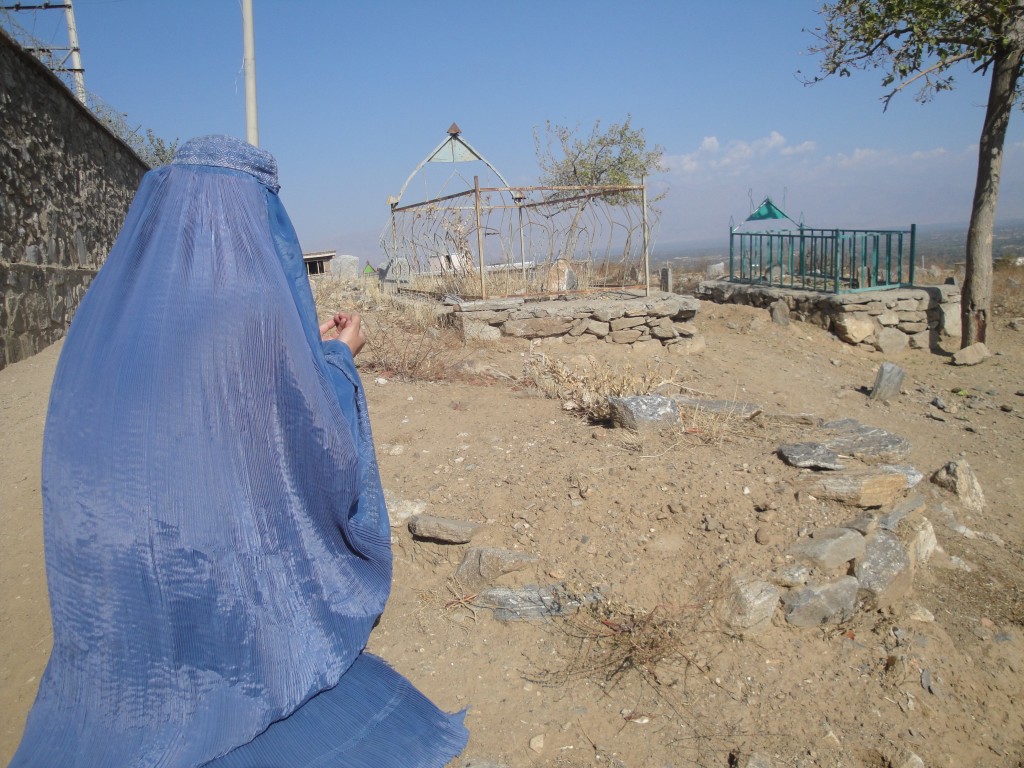
Zarmine (her back to the camera) prays in front of her brother Hashmatullah’s grave.
creidit: Sohaila Weda Khamoosh/Killid
With about 50 percent of adult Afghans suffering mental health problems, Rohafza’s story is one of millions who have undergone trauma in a war-torn country with little to no mental health services and archaic practices of handling mental illness at a family level – a combination that can make patients’ lives as tragic as the events that transformed them.
In Rohafza’s case it happened 18 years ago, when 17-year old Hashmatullah, her only son, was killed in the partisan war that followed the fall of the communist government of Afghanistan’s president Najibullah (1987-1992). Mujahedin groups that had been funded by the U.S. to fight the Soviet-backed government turned their guns on each other plunging the country into bloody civil war.
A rocket smashed into their neighbourhood killing Hashmatullah, her sister’s grandson and two of their classmates. “They were just coming back from school,” says Zarmina, one of Rohafza’s five daughters
Her father was sitting outside when suddenly there was a big blast and “Hashmat and his friends were thrown up in the air.” By the time they boy arrived at the hospital, the doctors’ efforts came too late.
“When they brought his body home, it was doomsday in our house. We sisters could hardly see the coffin for the crowds that had poured in to mourn with us,” Zarmina recalls.
According to the daughter, their son’s death unhinged both her parents, but it was her mother who lost her mind, leaving the family overwhelmed with caring for her. “Sometimes in the middle of the night we would see she was not in her bed. We would find her at Hashmatullah’s grave, screaming.”
When her mother tried to burn their house down, setting the carpets on fire, according to Zarmina, the family went ahead and tied her down with a chain. “But this only worsened her condition,” the daughter says.
As inadequate as the family’s response to Rohafza condition is, professional support is nearly non-existent in this country scarred by over three decades of war. Currently, a 60-bed clinic in Kabul is the only publicly run comprehensive mental health facility, while psychiatrists remain hard to come by. A 2006 joint report by the World Health Organization (WHO) and the Afghanistan Ministry of Public Health lists the total number of psychiatrists countrywide at two.
In 2010, the situation showed little improvement, with two doctors and a total of 200 beds for psychiatric services countrywide, according to WHO in an article by AFP.
Afghanistan, however, is not an isolated case. Seventy-five percent of an estimated 450 million people with mental health issues live in developing countries, with many of them being shut away, rather than treated.
Back in their village in Afghanistan, Zarmira remembers how her brother was born after a great deal of prayer and fasting by her mother, as their father had threatened to abandon the family if their sixth child was a girl. When Rohafza gave birth to a boy, she named him Hashmatullah, meaning Greatness. But he would not live long enough to fulfill his promise, laments his sister.
* Sohaila Weda Khamoosh writes for Killid, an independent Afghan media group in partnership with IPS. By distributing the testimonies of survivors of war through print and radio, Killid strives for greater public awareness about people’s hopes and claims for justice, reconciliation and peace across Afghanistan.
]]>As always with rich reports like these, there is too much valuable info to squeeze into one article, so I’m making use of this space to draw [...]]]>
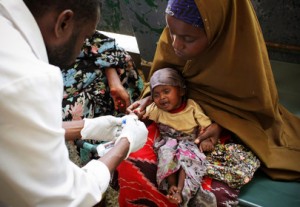
UN Photo/Stuart Price
Some may have seen my most recent article providing some highlights of a new UNICEF report on the global progress in reducing child mortality since 1990.
As always with rich reports like these, there is too much valuable info to squeeze into one article, so I’m making use of this space to draw attention to some more statistics that I think are worth mentioning.
For example:
:: Half of all under-five deaths occur in only five countries.
:: These countries are India, DRC, Nigeria, Pakistan and China.
:: 40 percent of all children dying under the age of five die within the first 28 days after birth.
:: UNICEF estimates that by 2050 one in three children will be born in sub-Saharan Africa.
Now, onto some positive news. Here are 12 former high-mortality countries that have made strides in reducing under-five mortality and are close to achieving Millennium Development Goal 4 by 2015.
Percentages are reduction:
Laos: 72 percent (MDG 4 achieved)
Timor Leste: 70 percent (MDG 4 achieved)
Liberia: 68 percent (MDG 4 achieved)
Bangladesh: 67 percent (MDG 4 achieved)
Rwanda: 65 percent
Nepal: 64 percent
Malawi: 64 percent
Cambodia: 64 percent
Madagascar: 62 percent
Bhutan: 61 percent
Ethiopia: 61 percent
Niger: 60 percent
]]>As I reported last month, [...]]]>
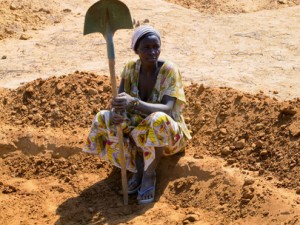
UN Photo/WFP/Phil Behan
As Beyonce’s video celebrating World Humanitarian Day continues to make its rounds through the internet, humanitarian workers on the ground in the drought-affected Sahel arguably have bigger fish to fry as they try to stave off deteriorating conditions in Niger and Mali amidst staggering shortages in relief funding.
As I reported last month, the United Nations Office for the Coordination of Humanitarian Affairs (OCHA) recently adjusted its needs projections for 2012 upward in light of what can be called a foreseeable escalation of the food crisis in the Sahel that started last fall.
Now it looks like cholera and locusts are further foiling already underfunded relief efforts across West Africa.
With four months left to the year, only 51 percent of the funding goal for the region has been met according to latest numbers by the U.N.’s Financial Tracking Service.
So far, an estimated 19 million people in the region are in dire need of assistance, many of whom were expected to rely on emergency food aid as primary means of sustenance by August.
In a special humanitarian bulletin on the Sahel crisis published last week, OCHA now warns of a developing locust infestation that could affect another 50 million people and diminish yields in the upcoming October harvest.
“Desert locust infestation remains dangerous as more egg-laying and hatching are expected in the coming weeks. Agricultural crop production, food and nutrition security, and the livelihood of some 50 million people in Chad, Mali and Niger are currently at risk, according to the FAO. This threat is the most serious since 2005.
Ground teams in Niger have treated 1,200 hectares against the pest since 5 June but ground surveys need to be scaled up to determine the scale and extent of current breeding, especially in those areas where rains have recently fallen.”
Still, rains are badly needed, as an early end to the current rainy season would further affect the upcoming harvest and increase food prices, according to a special report by the Famine Early Warning System Network.
As if that weren’t enough to juggle, cholera is now becoming an increasing worry in Niger, where refugee camps are a potential hotbed for the disease that could affect neighbouring countries along the Niger river, such as Mali, Nigeria and Benin.
About 52.000 people have fled political upheaval in Mali for Niger where 394,000 children under five will need treatment for severe acute malnutrition this year, according to UNICEF, which warns that malnutrition increases the chances of cholera outbreaks.
Nigeria has seen three times the number of cholera cases this year that it registered in 2011, according to Innocent Nzeyimana, the World Health Organization (WHO) Emergencies Manager in Niger in a recent OCHA story. “At this rate, we should be prepared for at least 9,000 cases by December.”
More from Nzeyimana:
“With high levels of water contamination and inadequate sanitation, our area is so prone to cholera. We’ve had cases in 2010 and 2011, but this time it is really getting serious.”
“In a closed environment like a camp, the spread is very fast and we may end up dealing far beyond the 9,000 projected cases. We don’t want that to happen.”
Prevention and treatment of cholera, meanwhile remains underfunded across the Sahel, with only 21 percent of the projected 53 million dollars needed for such programmes covered so far. In Niger only 30 percent of the roughly 8-million-dollar projected sanitation need has been met.
Organizations increasing their appeals
Last week, U.K.-based NGO Christian Aid doubled down on its aid appeal amidst reports by the World Food Programme (WFP) that without increased international support an estimated quarter million people fleeing political instability in Mali for neighbouring Niger, Mauritania and Burkina Faso, will go hungry in just weeks.
WFP is appealing for urgent contributions of 115 million dollars to address pipeline shortfalls for the next three months, according to last week’s OCHA bulletin, as the region is going through its lean season.
As the region awaits the fall harvest and food prices soar, many families continue to sell off their life stock, thus further diminishing their future capacity to foresee in their own livelihoods.
The United Nations Food and Agricultural Organization (FAO), which aims to build farmer’s resilience to future crises has seen less than 25 percent of its 112-million-dollar appeal met, threatening FAO’s ability to support preparations for the next food production campaign from October to December.
FAO is appealing for 10 million dollars to tackle the locust situation. So far France has contributed 550,000 dollars, and another 2.8 million has been pledged bi-laterally.
Last month, British NGO Development Initiatives released a comprehensive report on Humanitarian Aid that projected record shortfalls for 2012. Among other conclusions, the report showed a disproportionate funding for the 2010 mega-disasters in Haiti and Pakistan that syphoned away funds from other countries, including crisis prevention in countries in the now heavily affected Sahel region.
A quote from an OCHA rep in a recent AP article sums it up nicely, I think:
“Pictures of starving goats do not attract aid in the same way as images of dying children.”
Well, folks, we’re getting there.
]]>
